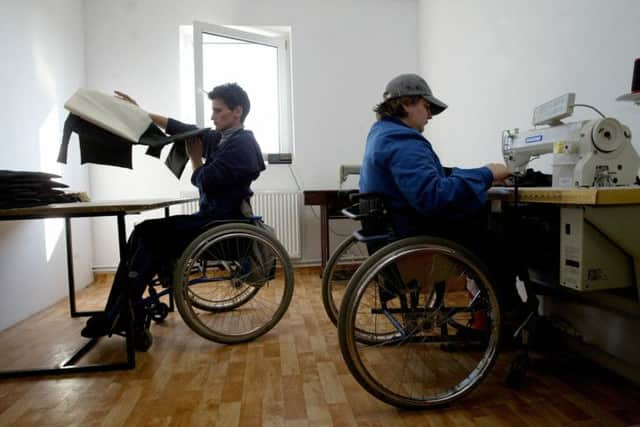A moral obligation to aid those in need


Reading the acronym ILF, some might imagine that it relates to a group of terrorists or freedom fighters. Perhaps after reading this, some will still think it does – because in this context it stands for Independent Living Fund, which offers a form of financial liberation for people with disabilities.
The ILF operates across the UK as a non-departmental public body overseen by an independent board of trustees but it is directly funded by the Department of Work and Pensions.
Advertisement
Hide AdAdvertisement
Hide AdMore than £300m per year is distributed to disabled people by the fund.
In June 2010, the Minister for Disabled People announced the ILF would close temporarily to new applicants; six months later, it was announced the closure of the Fund to new applications would be permanent.
In December 2012, it was announced that the ILF as an organisation would close in 2015. Responsibility for the fund it administered would fall to local authorities in England and the devolved bodies in other parts of the UK.
The Scottish Government launched a consultation exercise into what should be done with the funding when its administration came to Scotland. It opened in August this year and was concluded on 1 November. On 6 November, a judgement from the Court of Appeal said that in making the decision to close the ILF, the Minister for Disabled People had breached the public sector equality duty under the Equality Act 2010.
The DWP responded quickly by instructing the ILF to cease any activities relating to the transfer of funds to devolved bodies, and to cease all closure-related activity. Until the result of any appeal by the UK government, the status of the ILF is now as it was this time last year.
This phased closure and reprieve is not unusual as a representation of ILF’s history. Established in 1988, it was intended to assist people with disabilities to live as independently as possible, perhaps enabling a choice to live outside a residential care setting.
The Independent Living Fund was true to its title in several meaningful ways: it was the ILF’s own assessors, independent of any other public services, who assessed an individual’s needs; the Fund was portable so a person could choose to move from one part of the country to another; and eligibility alone defined ability to access the Fund, not any limit on the financial resources available to it. This last point proved critical to the ILF’s future and has led to numerous incarnations.
In 1993, the original Fund was replaced by the Independent Living (Extension) Fund which was closed to new applicants. Simultaneously the Independent Living (1993) Fund was established with new eligibility criteria, the most important being that social services made a financial contribution to the support.
Advertisement
Hide AdAdvertisement
Hide AdThe Independent Living (2006) Fund superseded the previous Funds but also maintained payments to existing recipients.
During each of its transformations, the Fund has generally decreased the maximum amount it could award individuals, refined and narrowed eligibility, and honoured existing awards, culminating with the closure announcement in 2010.
There are approximately 18,000 people making use of ILF, with people living in Scotland accessing about 17 per cent of the distributed funds. The amount of money any one person receives through ILF is not absolute to their support needs but relative to the incarnation of the Fund at the point in time when they applied to it.
Some people are notionally in receipt of an award for life whilst others who have comparable needs receive nothing.
Until the Court of Appeal decision, we were heading towards something new in Scotland come 2015.
The government’s consultation exercise sought to frame the future allocation of the fund through answers to questions like how and to whom should the fund be targeted and gave four options for its administration: by local authorities, by Scottish Government, by a replacement non-departmental public body, or by a new partnership or trust.
The consultation asked for ideas as to how the overall amount of money available could be increased but this question was preceded by one of how money should be allocated in the future when people no longer needed it, for whatever reason.
ILF was well-intentioned and benefits thousands of people. Its positive qualities of independence and portability still hold true but neither the DWP nor the Scottish Government think it is sustainable in its current form. One option, closing the fund, has at least for the moment been deemed unlawful.
Advertisement
Hide AdAdvertisement
Hide AdWhat happens now is not clear. How is it possible to reconcile inequity of access with lack of availability of additional funds? How does it feel to be someone who is contemplating losing their independence or to be someone who is not being given the opportunity more fully to realise theirs?
As is the case when assessing the difference between acts amounting to terrorism or the liberation of disadvantaged people, there are more questions to ask, and in the case of ILF these are as much moral questions as financial ones.
• Lesslie Young is chief executive, Epilepsy Scotland www.epilepsyscotland.org.uk
SEE ALSO